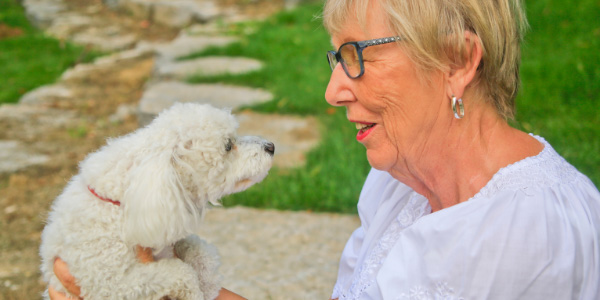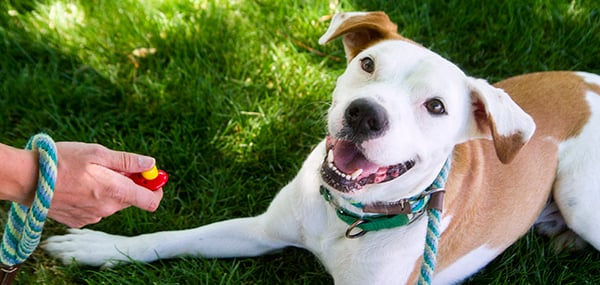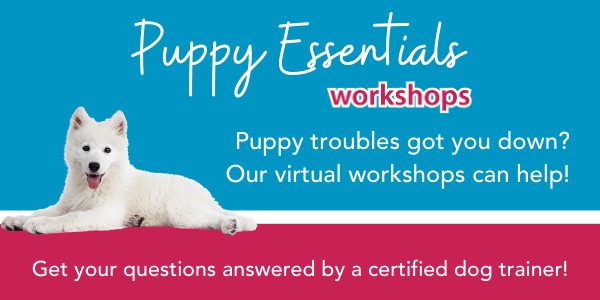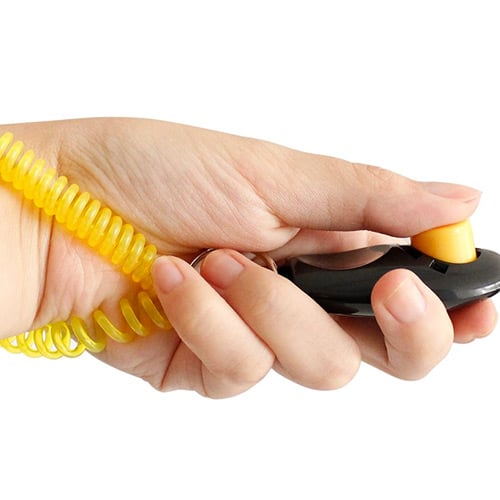 How to Better Communicate With Your Dog
How to Better Communicate With Your Dog
Communication is key to living in harmony with our dogs, and this can be tough since dogs and humans don’t speak each other’s language. Humans are quite verbal creatures — we rely primarily on our words to communicate how we’re feeling, tell each other about our day, ask for help, or give instructions.
Dogs, however, are not quite as verbal like we are. They ‘speak’ to each other (and to us) using changes in their body language; something as small as licking their lips or yawning can communicate something meaningful.
Fortunately, dogs love to learn! And they can do so quickly when we're communicating well with them and they have the right motivation. Who else finds themselves spelling out W-A-L-K when your pup is around so you don’t start the excited happy dance at the door before you’re actually ready to take them outside for a stroll?
When they first come home with you though, it's a different story. If you’ve ever traveled to a foreign country where you didn’t speak the language, you’ve had a taste of what it’s like for a dog settling into a new home. It can be overwhelming to try and communicate your needs and understand what’s expected of you! The more time you spend in that country, the more you start to understand and the easier it gets, which means you feel more comfortable and relaxed. And that process can be sped up — and is more fun — if you befriend a local who speaks enough of your language to best help you learn the ways of your new world.
Similarly, we can set our dogs up for success by speaking in a language and manner that they'll most easily understand. Marker training is the perfect, universal language to start bridging the language barrier and help you and your dog start communicating clearly right from the get-go.
Use a Marker
Marker training is a technique that is used by animal trainers around the world, and the most common type of marker is a clicker. Clickers emit a consistent short “click” sound when the button is pressed. By using your dog’s amazing associative learning skills, a clicker can help you better communicate to your dog what works and what doesn’t.
When you begin clicker training you teach your dog that the click is always followed by a food treat. For most dogs, it doesn’t take long to understand that click = food. You then can move on to clicking when your dog does a behavior you like, and it’s amazing to see how fast dogs become at trying to figure out what makes their human click. Your clicker becomes a shared language between you and your dog and gives you an easy way to tell them that what they did was what you wanted.
Click = I like what you did there, here’s a yummy treat, try it again!
Sometimes the marker can be a verbal word, like “Yes,” or with (deaf dogs a hand signal or flash of light can be used to mark behaviors. The more you mark a behavior from your dog, the better they understand that particular behavior pays, and will start to offer it more and more. Your clicker becomes your dog’s very own personal translator.
Stop the Chatter
This might sound counterintuitive, but your dog will learn verbal cues faster if you don’t constantly talk at them. Their brains have to constantly sift through all that noise we make, listening for particular words that have meaning for them. Let’s look at the following example.
You’re getting ready to take your dog Fluffy out for a walk and your conversation with them goes like this:- “Fluffy, do you want to go outside? Let’s go outside and go potty and then go for a walkie. Hold still, let me get your harness on. What a good dog you are! Hold still, Fluffy. Let’s go for a walk. Wait for me, I’ve got to put my coat on. Okay, you ready? Ready for walkies? Can you sit for me? Sit at the door, Fluffy. Sit. Sit. Fluffy, please sit. Sit! Good sit! Okay, let’s go outside.”
- “Fluffy …. outside? ... outside … go potty … walkie … good dog …! Fluffy … walk … walkies? ... sit … sit … Fluffy. Sit. Sit. Fluffy … sit. Good sit! ... outside.”
Everything in between those words that Fluffy recognized was just extra noise — chatter that they learn to ignore because it has no meaning. It can be hard for your dog to hear the verbal cues that matter when they’re being drowned out by chatter. Be aware of how much you talk at your dog when asking them to do a particular behavior.
Now, this isn’t to say that you can’t ever have a total love and praise fest with your pup! Many dogs certainly enjoy the shower of affection and verbal praise they receive. Try to limit all that verbal noise for use as a praise reward, or when you’re bonding with your pup during play or cuddle time. If you’re working on teaching them a new verbal cue, clean up the chatter so your dog can associate words more quickly with their actions.
 Say It Only Once
Say It Only Once
When teaching your dog a new word, try not to repeat the word over and over if they don’t get it at first. This can be a very hard habit to break! We’ve learned as humans that if someone didn’t hear or understand us, we should repeat the word and get louder.
Ask any mother or father if they’ve experienced this with their kids. Mom or Dad didn’t hear? Well, okay, let’s say their name ten more times, getting louder and louder so they’ll respond. And while this might work for humans (albeit usually causing irritation and frustration), it has the opposite effect for dogs.
The more a verbal cue is repeated and not associated with a particular action, reward, or consequence, the less meaning it has. It simply becomes more chatter and white noise that your dog ignores.
If you ask your dog to “sit,” say it only once. Wait for a second to see if they put their rear on the floor. If they do, give them a treat party! Your dog knows the verbal cue for Sit. If they don’t sit, they simply haven’t quite learned that verbal cue yet (or they're distracted). That means you just need to go back a step in training the Sit cue, saying the word "sit" before you lure them into that position to build an association between word and action. After more repetition, you can say "Sit" without any hand signal or lure to check again if they know it on verbal cue only.
Show them what you want by using a lure or hand signal to make the behavior happen, mark it, and then reward it. It takes repetition and consistency for your dog to learn new skills, so make it easy. Showing them what you mean after giving a verbal cue is much more effective in building associations between the word and the action than just repeating it over and over again.
If you follow these tips, your dog will have a much easier time translating your words into action, increasing responsiveness and speed of learning new tricks and behaviors. Clear communication is the foundation of a strong relationship between dog and owner, and being able to communicate across species is quite the feat.
Don’t worry if you mess up once in a while and confuse your dog — you’re only human! Remember, practice makes perfect. Practice using a marker so your dog understands what works, limit the extra chatter you use around your dog, and give clear meaning to words by not repeating them, showing your dog what they mean instead. Your dog will thank you for it!





